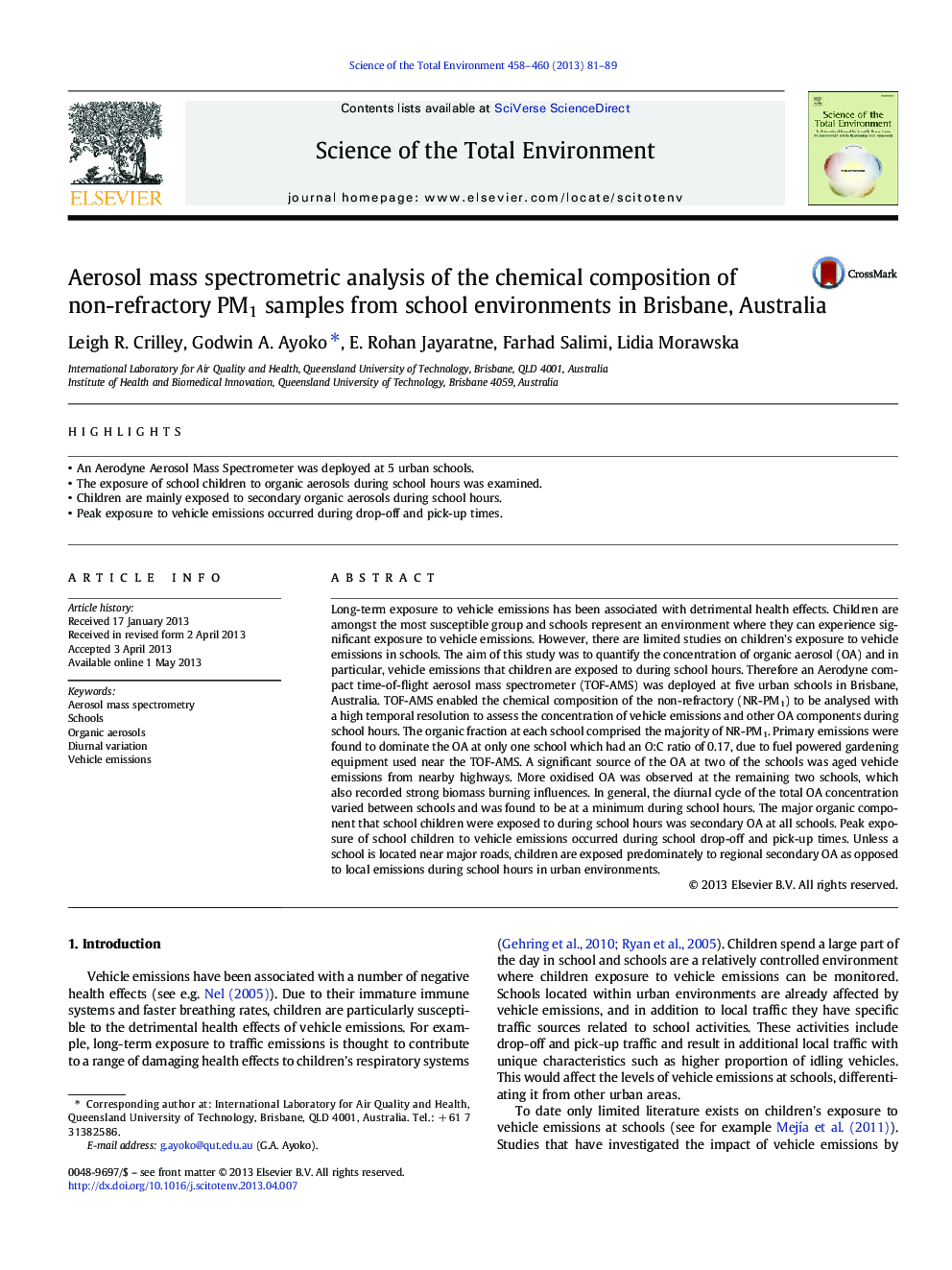| کد مقاله | کد نشریه | سال انتشار | مقاله انگلیسی | نسخه تمام متن |
|---|---|---|---|---|
| 4428609 | 1619800 | 2013 | 9 صفحه PDF | دانلود رایگان |

• An Aerodyne Aerosol Mass Spectrometer was deployed at 5 urban schools.
• The exposure of school children to organic aerosols during school hours was examined.
• Children are mainly exposed to secondary organic aerosols during school hours.
• Peak exposure to vehicle emissions occurred during drop-off and pick-up times.
Long-term exposure to vehicle emissions has been associated with detrimental health effects. Children are amongst the most susceptible group and schools represent an environment where they can experience significant exposure to vehicle emissions. However, there are limited studies on children's exposure to vehicle emissions in schools. The aim of this study was to quantify the concentration of organic aerosol (OA) and in particular, vehicle emissions that children are exposed to during school hours. Therefore an Aerodyne compact time-of-flight aerosol mass spectrometer (TOF-AMS) was deployed at five urban schools in Brisbane, Australia. TOF-AMS enabled the chemical composition of the non-refractory (NR-PM1) to be analysed with a high temporal resolution to assess the concentration of vehicle emissions and other OA components during school hours. The organic fraction at each school comprised the majority of NR-PM1. Primary emissions were found to dominate the OA at only one school which had an O:C ratio of 0.17, due to fuel powered gardening equipment used near the TOF-AMS. A significant source of the OA at two of the schools was aged vehicle emissions from nearby highways. More oxidised OA was observed at the remaining two schools, which also recorded strong biomass burning influences. In general, the diurnal cycle of the total OA concentration varied between schools and was found to be at a minimum during school hours. The major organic component that school children were exposed to during school hours was secondary OA at all schools. Peak exposure of school children to vehicle emissions occurred during school drop-off and pick-up times. Unless a school is located near major roads, children are exposed predominately to regional secondary OA as opposed to local emissions during school hours in urban environments.
Journal: Science of The Total Environment - Volumes 458–460, 1 August 2013, Pages 81–89